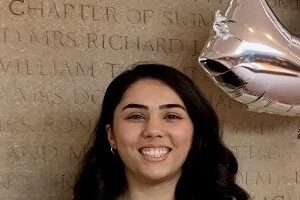By Luke Waltzer
The Teaching and Learning Center’s workshop on drafting statements of teaching philosophy, the most recent of which was held on September 22nd, is usually among our more highly-attended events. The statement of teaching philosophy is challenging to produce, especially amidst the various stressors of the job market. What follows is a description of the core ideas and guidance from this workshop, which revolve around putting the statement in context and suggesting some strategies for crafting truly personal reflections that offer search committees a clear picture of who the applicant is as an educator.
We start our workshop on drafting statements of teaching philosophy by acknowledging the difficult realities of the job market. It’s overwhelming, with no guarantees, and a lot of potential for trauma. A workshop can’t change those facts, so we address them, then try our best to put them aside and focus our attention on the creation of this particular artifact.
Students who aren’t yet on the market regularly attend the workshop, trying to get ahead of the game. We emphasize that crafting a statement of teaching philosophy has utility for everyone. It’s wise for all educators to take a step back from their teaching at times and to ask big questions about what’s driving their decisions, and how and why they teach. It’s difficult to do that when stacking semesters swiftly on top of one another and balancing research and care responsibilities. Putting our work into words can help us better understand our values and more clearly explain them in a variety of contexts.
Attendees are reminded of two fundamental facts about the academic job application process. First, the purpose of the application is to get the interview. This statement is not going to make the department decide to hire you, but it should make the department want to get to know you better–and should not disqualify you! Second, and relatedly: search committees are going to be reading dozens or even hundreds of applications. As my colleague David Hershinow (director of the Graduate Center’s Writing Center) has noted when he’s joined me for this workshop: you want to make it through the initial yes/maybe/no sort. This has specific utility for thinking about how to structure the statement: make it short (no more than two pages), readable (minimize jargon), with a clear and direct opening paragraph, and strong topic sentences. More guidance on structure will come below.
The statement of teaching philosophy complements the other parts of the application: the job letter, the cv, the research statement, etc. Applicants should think of the application as a cohesive package that presents a full picture of their accomplishments and identity as a scholar. Experience, ideas, and values should resonate and flow across the documents. They should be presented in the same font and style, and reinforce each other thematically without being redundant. The cv might note what you have taught, the cover letter might describe what you would be able to teach at the hiring institution, and the statement of teaching philosophy should demonstrate how you’d approach this work. Should you reach the short list—the dozen or so applicants the committee will consider interviewing—this coherence and attention to detail can strengthen the reader’s sense that you are well-rounded, organized, and prepared for the various components of a faculty job: teaching, research, and service.
Sometimes the application asks not just for a statement of teaching philosophy, but for “evidence of teaching effectiveness” or a “teaching portfolio.” The statement of teaching philosophy is part of this package, but it might also include a sample syllabus, an annotated assignment, an observation report, and student evaluations. We urge applicants to keep their teaching portfolio brief, avoiding including large documents—such as a 18 page syllabus, or a 2 page, single-spaced assignment prompt—that will be difficult for readers to absorb quickly.
Whether asked for just the statement, or a whole portfolio, it should become clear to readers what motivates you as a teacher. It can be a challenge for educators to articulate that idea. We all have a philosophy, whether we know it or not. A teaching philosophy does not need to be grandiose or unique; think of it simply as a system of thought, or a set of organizing principles that guides your practice as a teacher. An effective statement will balance specific examples with generalizations, and will place small teaching moments in dialogue with your experience in aggregate. It shows your values rather than telling readers what those values are. For example, instead of (or in addition to) writing “I use student-centered approaches in the classroom,” describe a student-centered strategy and say why it made sense in that particular context. Ideally, the statement will present your teaching as aligned with the other elements of your identity as a scholar. If you deploy sophisticated digital methods in your research, and then in your teaching statement eschew the use of technology without a clear explanation of why, it may raise questions within the search committee about the extent to which you have fully thought through your approach as a scholar.
As an exercise to get started, you might freewrite in response to the following questions:
- what is it like to be one of your students?
- how do students spend their time when in your classes?
- how and why do you make the pedagogical decisions you make?
- how do you address the challenges particular to teaching in your discipline?
To articulate a philosophy, then, look for connections between your responses to these questions. Do you teach history, and think that it’s important for all students to know how understandings of the past are constructed and contested? Say that, say why, and then show how your choices as a teacher for readings, assignments, and activities build student capacity towards those ends. Do you teach environmental science, and think that students should have an understanding of how scientific data are deployed in policy arguments? Say that, say why, and then show how you’ve structured your classes to help students develop that lens on the world. Teaching composition, and want students to become more confident, efficacious writers who can communicate clearly across context? You get the point.
The statement of teaching philosophy should ultimately address each of the questions above, and ideally in a way that leads the reader to imagine you in the actual classroom, teaching purposefully. The statement should communicate that you value and are reflective about teaching, that you are responsive to the needs of your students, and that you approach your work with equal measures of confidence and humility.
This last point is often difficult for applicants, given that we all are trying to present our work in the best light when we apply for jobs. While many of us hope that our teaching will transform the lives of our students, there are factors way beyond our control that shape how students experience in our classes. It’s not plausible—and thus could be a red flag to a reader—if you say that “all students are transformed in my classes.” Focus on what you hope students will experience, your aspirations for their growth, and how—with specific examples—you support that process.
CUNY Graduate Center students have particular kinds of teaching experiences that can help their statements stand out. CUNY’s classrooms are famously diverse: socioeconomically, ethnically and racially, in terms of language, age, country of origin, and prior schooling. Many GC students have taught—as instructor of record—introductory courses, advanced courses, courses inside and outside their subfields, courses in various instructional modes, and courses at multiple campuses. Many have worked also as Writing Across the Curriculum Fellows, Instructional Technology Fellows, Quantitative Reasoning Fellows, or in other kinds of academic support roles. All of these experiences should be acknowledged in some way in your statement, as they demonstrate that your philosophy has been honed by thinking about teaching and learning in a variety of contexts. This will strengthen the case that you are ready for any kind of teaching that the institution may ask of you.
Still, you may feel the need to tailor your statement for specific jobs. When applying, you should look on the departmental website to see what kinds of courses Assistant Professors teach (large/small? Intro/advanced? Gen ed/for majors?), and to see if you can glean the hiring department’s strategy for instruction (lots of online courses? Heavy emphasis on writing? Experiential learning opportunities?). David Hershinow again gives helpful structural guidance on how to address these particularities. For instance, if you’re applying to a small liberal arts college and think they might be worried that a GC student who has mostly taught large classes may not know how to teach in a more “liberal artsy” way? Make an argument at the start of one of the paragraphs that addresses this concern directly. And then make sure to conclude the paragraph in a way that comes back to this argument. This is a small change that can shift the way a statement lands for a reader without requiring much from you in terms of a revision.
Like all documents for the job market, the statement of teaching philosophy benefits from feedback and revision. To help orient yourself and a friendly reader, see this Rubric for Evaluating Teaching Statements, created by colleagues at the University of Michigan’s Center for Research on Learning and Teaching, and revised by the staff of the Teaching and Learning Center to address the CUNY context. Take advantage of services at the Graduate Center by visiting the Writing Center for feedback on your writing, and the Teaching and Learning Center to talk through framing your teaching and articulating your philosophy. And, to put the whole thing together, see the Office of Career Planning and Professional Development.
Good luck!
Luke Waltzer is the Director of the Teaching and Learning Center at the CUNY Graduate Center.













Leave a Reply